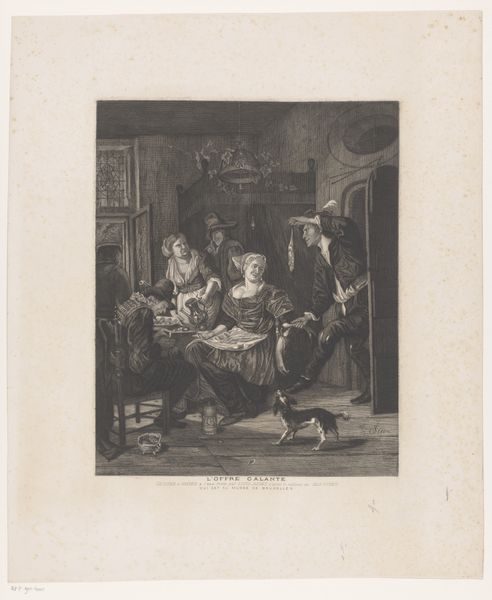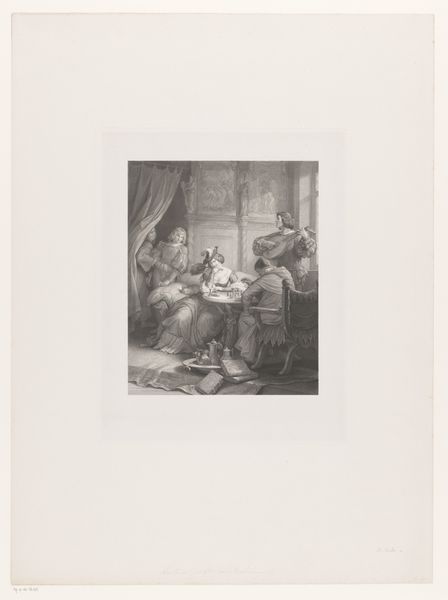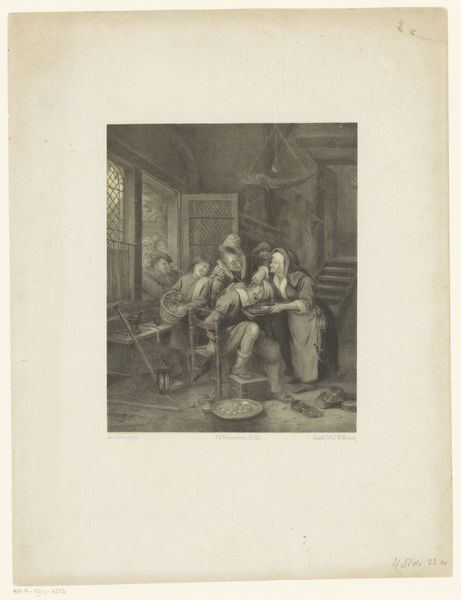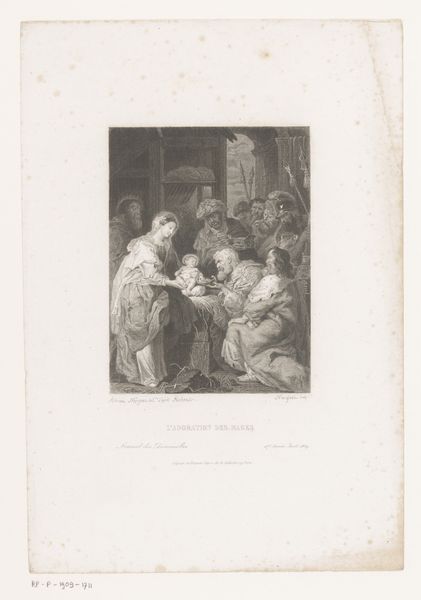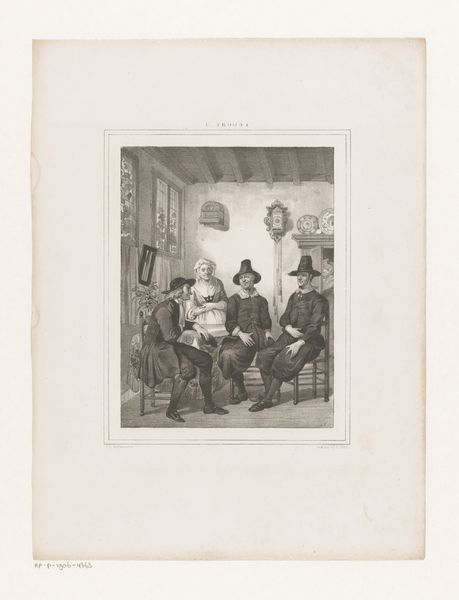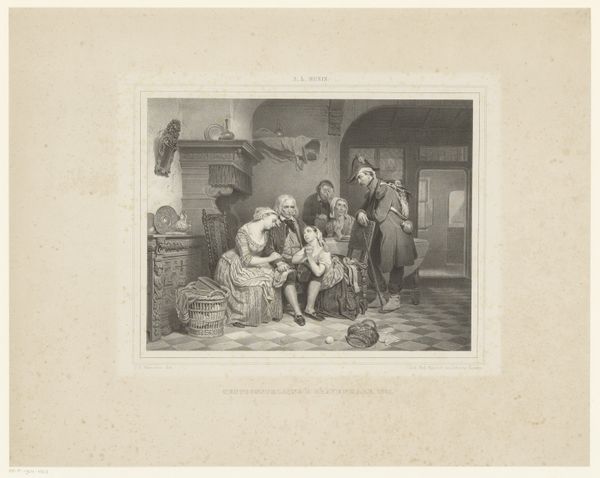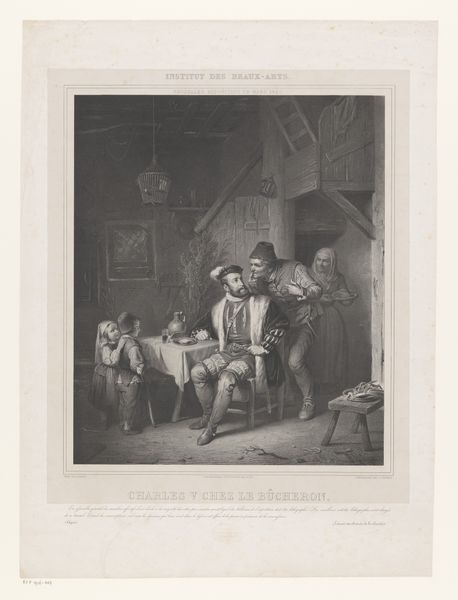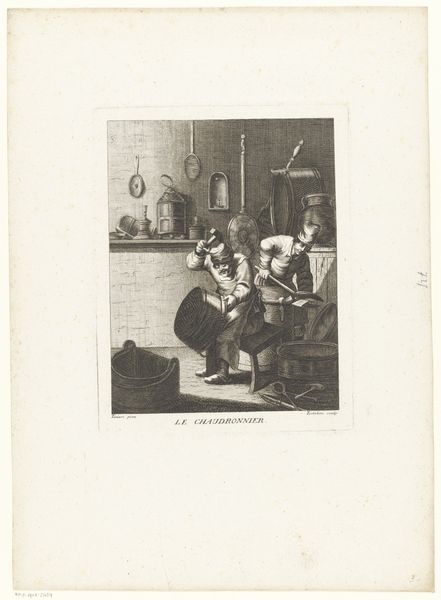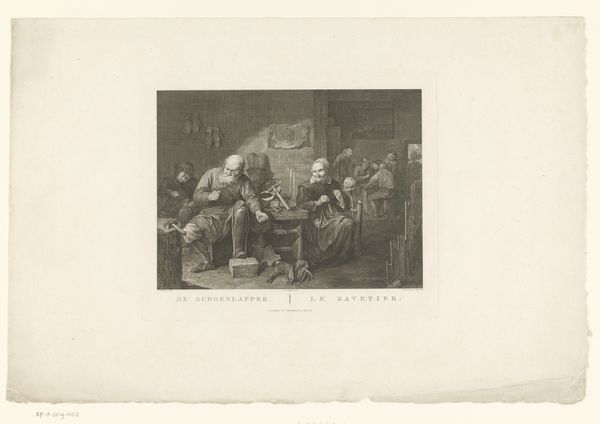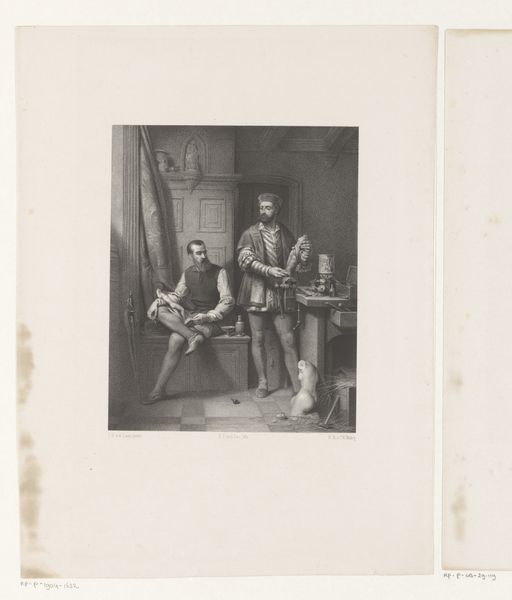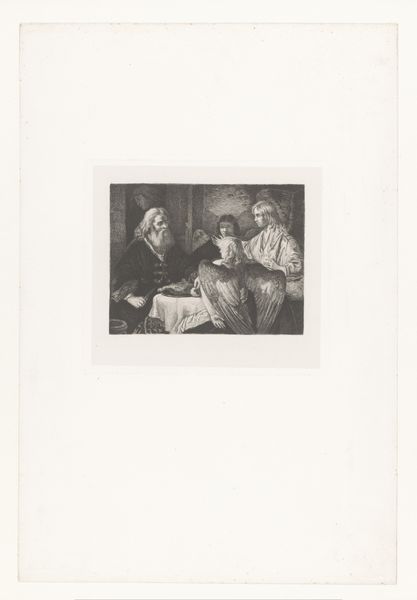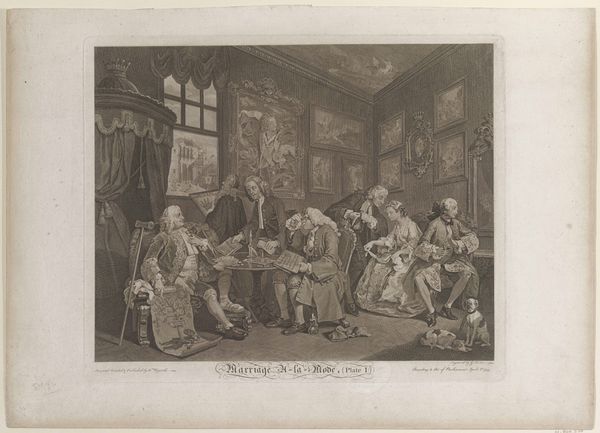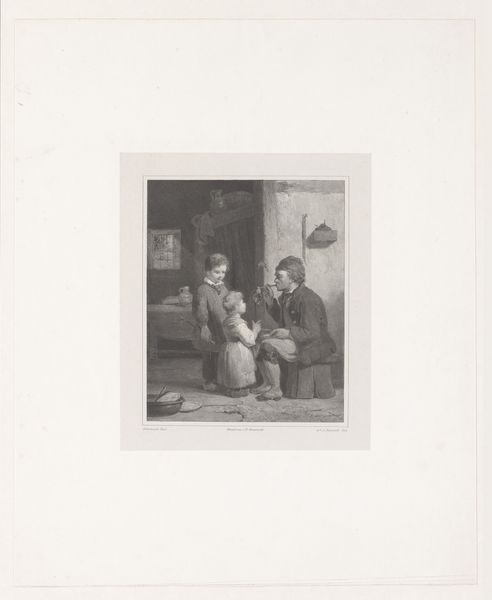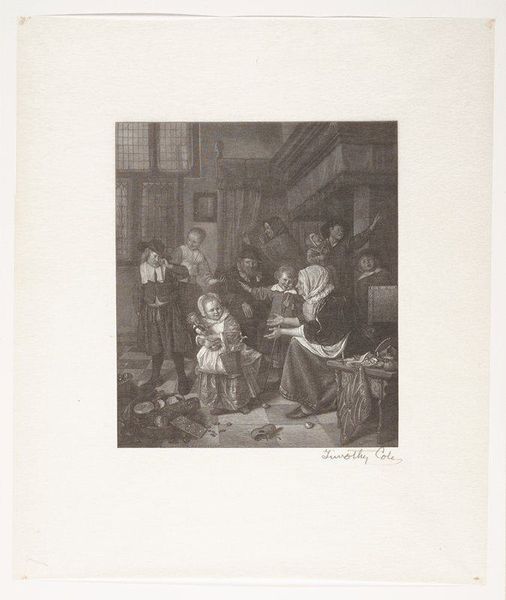
drawing, paper, engraving
#
portrait
#
drawing
#
narrative-art
#
paper
#
genre-painting
#
history-painting
#
academic-art
#
engraving
Dimensions: height 516 mm, width 383 mm
Copyright: Rijks Museum: Open Domain
Editor: There’s a quiet drama playing out in this piece. The greyscale softens the narrative, making it feel both intimate and historical. Curator: Yes, "Vrouw met ziek kind bij een dokter," or "Woman with sick child and a doctor," created before 1866 by Edouard Girardet. It’s an engraving, so you’re really seeing a master at work with line and texture rendered on paper. You almost feel like you could touch the fabric and smell the tinctures on the shelves. Editor: Absolutely. What's most striking is how the artist utilizes everyday materials—paper and ink, laboriously etched—to construct a window into a domestic scene infused with anxiety. Look at the staging: mother and child meet the doctor with his apprentice as a witness, inside of a home serving also as a workshop of healing arts. Curator: Precisely! I wonder, too, about the nature of academic art at the time, and the story behind genre paintings like these... does it present a truth, or a fiction designed to teach something specific? I can’t help but notice a touch of the macabre over by the doctor’s workspace, with the skull displayed above him, while an alchemical still reflects bottles from the shelves! Editor: Good point. The presence of those objects, so carefully rendered in such accessible style, prompt us to consider what was considered precious enough for rendering? Not just the family at hand, but also the implements and interior decorations behind them! Was Girardot a man looking from outside to capture and tame everyday lives? Curator: It’s funny you say "tame"... The mood is, isn't it? Controlled, despite the worry etched on the mother’s face and in the physician's concerned countenance... I'm intrigued. As we look closer, we catch the scene's stillness despite its heavy emotions. Editor: Ultimately, though, the value resides in the image's accessibility—its material humility. Paper, ink, a plate, the manual labor...it's an exercise in accessible image making and perhaps propaganda... All brought to bear to capture—and perhaps smooth over—a universal and timeless human experience, what to do with sickness and disease, from home remedies to new sciences... Curator: So well-captured here in what would, and will become, the banality of domestic space in the grips of forces beyond our grasp. Thank you for that deeper gaze on the real underpinnings.
Comments
No comments
Be the first to comment and join the conversation on the ultimate creative platform.
